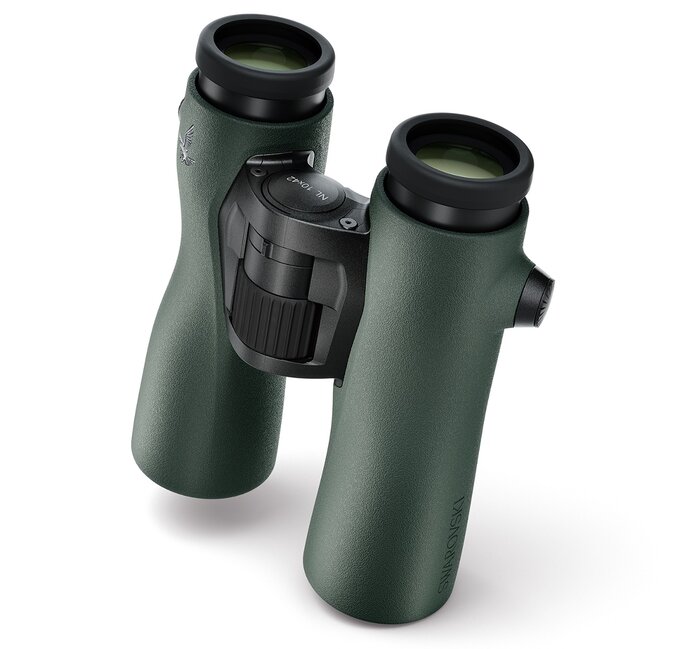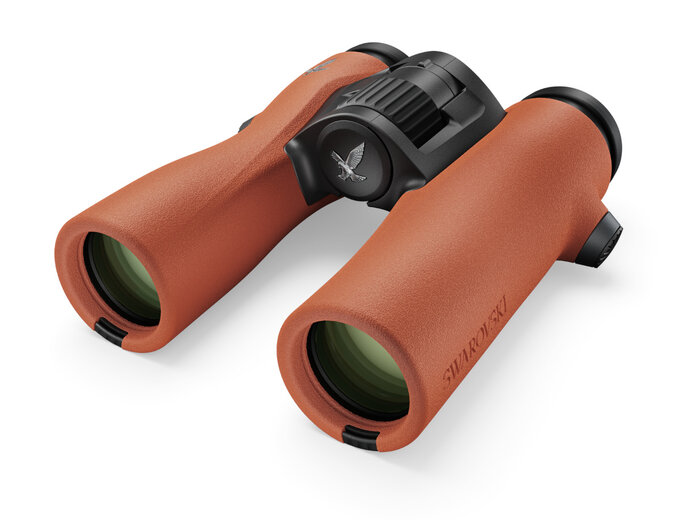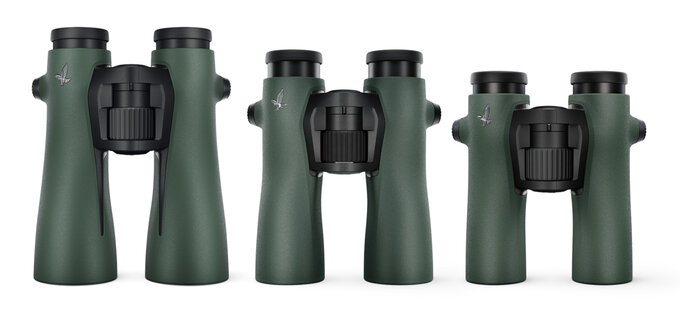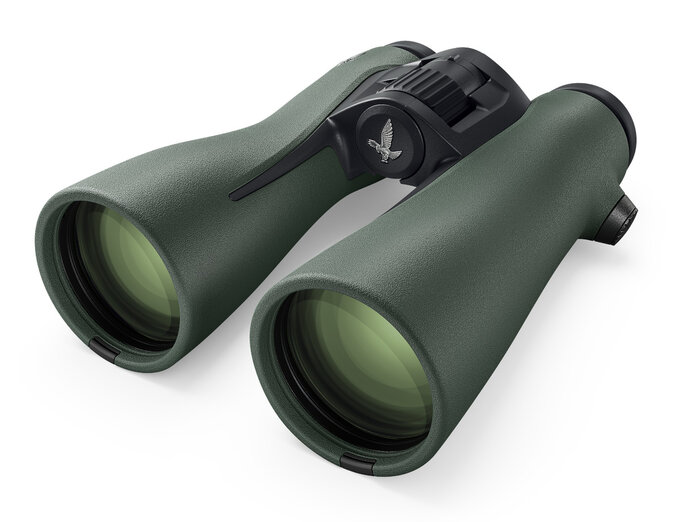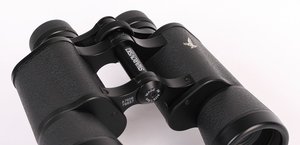| Real front lens diameter |
Left: 51.76+/-
0.05 mm
Right: 51.78+/-
0.05 mm
|
7 / 8.0 pkt |
| Real magnification |
9.97+/-
0.05x
|
3/3.0 |
| Transmission |
88.2+/-
1%
|
16/25.0 |
| Chromatic aberration |
Practically zero in the centre, a bit lower than medium on the edge. |
8.3/10.0 |
| Astigmatism |
Slight. |
9/10.0 |
| Distortion |
When you go further away from the field of view centre, somewhere after the middle point straight lines start to bend slightly showing traces of pincushion distortion. Then the increase of distortion is stopped and then reversed so the lines on the very edge of the field don't show any significant deformations.
|
9/10.0 |
| Coma |
Appears in a distance of 65%, then it slightly increases, then it decreases and on the very edge is right between low and very low values. |
7.8/10.0 |
| Blurring at the edge of the FOV |
Excellent sharpness level in almost all the field of view. A very slight decrease of sharpness can be noticed right next to the diaphragm. |
10/10.0 |
| Darkening at the edge the FOV |
Slight. |
4/5.0 |
| Whiteness of the image |
Very nice, flat transmission graph. Lack of any noticeable colouring of images. |
4.8/5.0 |
| Collimation |
Perfect. |
5/5.0 |
| Internal reflections |
| Left: |
Right:
|
 |
 |
The situation is hardly perfect. There are some slightly brighter areas near the exit pupil. |
4/5.0 |
| Housing |
Very solid, but also sleeker than the EL series instruments. Doesn't look big, especially if compared to other 10x50 class models. The profiled casing, shaped so because of the turning of the prisms, fits your hands very well so the binoculars are a joy to hold and to look through. Objective lenses are hidden inside the casing over 1 cm deep in the tubes. The rubber armour sticks to the body very well, is slightly rough, and quite nice to hold. It has traces of glueing/joining and it spoils a bit the overall esthetics. Rubberized eyecups fit your eyesockets well and they have as many as seven detention stops. The binoculars are produced in Austria. |
7.9/8.0 |
| Focusing |
Compared to the EL series the focus wheel has been changed significantly – now it is surrounded by a bridge and behind it there is a small joystick for dioptre correction. It looks and works better than in case of the predecessors, with a bit more distinct resistance. It is typical for Swarovski that you have to turn the wheel a lot – its focus throw amounts to an angle of about 690 deg. |
5/5.0 |
| Tripod |
You can buy an andditional brand-name attachment. |
2/3.0 |
| Interpupilary distance |
from 55.9 to 74mm
|
5/6.0 |
| Closest focusing distance |
3.15 meters. |
2/2.0 |
| Eyepieces FOV |
Apparent field of view of 73.6 deg (simplified formula) and 65.5 deg (tangent formula). |
17/20.0 |
| Field of view |
Measured by us amounted to 7.38 ± 0.03 deg and was,within the margin of error, in accordance with the field stated in official specifications. A huge field for this class of equipment. |
8/8.0 |
| Quality of the interior of the barrels |
The interior of the binoculars left me with mixed feelings. On the one hand the cleanliness is really exemplary, with distinctly ribbed tubes in several places. The surfaces are matt but rather gray than pitch-black. What's more, in a slit between the edge of the casing with a focusing element and the tube itself there is quite bright screw. The outer area of the prism cell is also far from perfect, being even less black and less matt than the tubes. |
3.8/5.0 |
| Vignetting |
| Left: |
Right:
|
 |
 |
OL: 1.47%, OR: 1.95% |
6/8.0 |
| Prisms quality |
High quality BaK-4. |
8/8.0 |
| Antireflection coatings |
Green-yellow-purple on objective lenses, green-yellow on the prisms, pink-green-yellow on the objectives. Low intensity. |
5/5.0 |
| Warranty [years] |
10 years |
4.5/6.0 |
| Final result |
85.3%
|
162.1 / 190 pkt
|
| Econo result |
|
0pkt. |
Summary
Pros:
- solid, stylish, and quite handy casing,
- huge field of view,
- transmission in accordance with official specifications,
- excellent colour rendering,
- sharp images practically across the whole field of view,
- sensational astigmatism correction,
- slight chromatic aberration,
- very low distortion with good control of rolling-ball effect,
- slight brightness loss on the edge of the field of view,
- low coma,
- sensible appearance of area near exit pupils,
- clean inside the binoculars,
- excellent quality of coatings,
- high quality prisms made of BaK-4 glass.
Cons:
Our tests of NL Pure series 32 and 42 mm Swarovski models showed that these pairs of binoculars are trailblazers when it comes to quality levels. After the launch of 52 mm instruments our expectations were equally high. Were they met by the tested model? Let's find out.

Shapely Swarovski NL Pure 10x52 binoculars in even more shapely female hands. |
The mere lists of pros and cons are enough to sum up this test in a satisfactory way. The tested binoculars managed to get the highest score among all 10x50 instruments, handled by us so far. In
our ranking the Swarovski NL Pure 10x52 managed to outperform even the extremely expensive and big Nikon WX 10x50.

Pentax PIF 10x50 with huge Porro prisms and Swarovski NL Pure 10x52 binoculars. |
Still, it would be a pity to end the summary of such a well-put-together instrument so soon, and we do have several other interesting remarks.
Excellent antireflection coatings are a trademark of Swarovski; because of them you get very high transmission and proper white balance, ensuring neutral colours.

Antireflection coatings of Swarovski NL Pure 10x52 binoculars. |
Nothing changed here when you compare this performance to the performance of smaller NL Pure models. Coatings are excellent, reflecting very little light, and when you look at the binoculars from the front you have an impression of peeking at completely empty tubes, whitout any elements inside.
Still the transmission graph slightly differs from graphs usually produced by Swarovski Optic instruments.
We mean here that the declared transmission, getting to 91%, is reached in the red part of the spectrum. In the most interesting range, the middle of the visible spectrum, it drops to near 88%. That's why the graph is not perfectly flat. Perhaps a lot of thick glass elements inside are the reason why the binoculars' optical system is not so efficient. The light must go through more glass than in the smaller models and such absorption is always stronger for shorter wavelengths. That's why there is slight loss when it comes to purple, blue, and even green light.
Of course it doesn't change the fact that, overall, the transmission of NL Pure 10x52 is on a good level and colour rendering - almost perfect. As usual, images produced by the Swarovski model are crisp, cristal-clear and very sharp.

Swarovski NL Pure 10x52 binoculars shown with optional tripod mount. |
Excellent correction of the majority of optical aberrations undoubtedly helps to achieve that result. It is especially praiseworthy as you deal here with a very wide field of view. The most important thing is that you don't have an impression that this field was achieved only with a lot of strain. Quite the opposite – even right by the diaphragm the image is of very good quality.
To sum up you can say without any hesitation that the NL Pure 10x52 model keeps the high level presented by smaller binoculars of this line and is a real joy to use. It's a pity you have to pay through the nose for such a joy...
We would like to thank the Beafoto.pl shop for lending us one specimen of the Swarovski binoculars for our testing.
